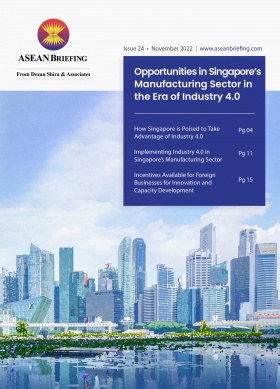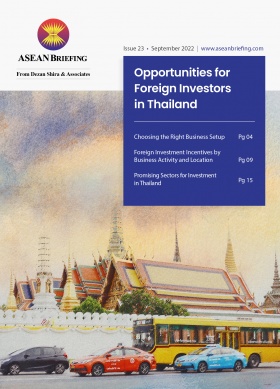ASEAN-Australia-New Zealand Free Trade Area Upgraded
ASEAN, Australia, and New Zealand have concluded the negotiations to upgrade to their free trade agreement, the ASEAN-Australia-New Zealand Free Trade Area (AANZFTA). The upgrade will be officially signed in 2023. By upgrading the AANZFTA, the participating countries hope to spur post-pandemic growth, facilitate trade, make supply chains more resilient, and encourage sustainable development.
ASEAN, Australia, and New Zealand recently concluded negotiations to upgrade their free trade agreement, in a bid to modernize the agreement and strengthen regional supply chains.
Ministers involved in the negotiations finalized the upgraded agreement on November 13, 2022, at the 40th and 41st ASEAN Summit in Phnom Penh, Cambodia. The parties plan to sign the upgrade to the agreement, which is officially known as the ASEAN-Australia-New Zealand Free Trade Area (AANZFTA), in Spring 2023.
The AANZFTA is a major free trade area that includes over 650 million people and over US$4.5 trillion in combined GDP. The agreement is ASEAN’s highest quality free trade agreement in terms of opening market access to trade in goods.
By upgrading the AANZFTA, the participating countries hope to spur post-pandemic growth, facilitate trade, make supply chains more resilient, and encourage sustainable development. The upgrade comes at a time when many developed economies – including Australia and New Zealand – are increasing their footprint in Southeast Asia to diversify their supply chains and reduce trade risks.
Concluding the upgrade of the AANZFTA was a key goal for Cambodia while it held the ASEAN chairmanship. Ministers first launched upgrade negotiations in September 2020 and held the first talks in April 2021. Parties to the AANZFTA will need to sign the Second Protocol to Amend the AANZFTA in 2023 to formally pass the upgrade.
What is in the AANZFTA upgrade?
The upgrade introduces three new chapters to the AANZFTA: on government procurement, micro, small, and medium-sized enterprises (MSMEs), and trade and sustainable development. They also introduce new provisions on education services and augment provisions on e-commerce, competition and consumer protection, customs procedures and trade facilitation, trade in goods, rules of origin, trade in services, and investment.
The new provisions hope to modernize the AANZFTA and keep it aligned with international best practices that have emerged since its creation.
In a joint statement, the AANZFTA ministers emphasized the importance of the upgrade to strengthening the resilience of supply chains. The joint statement said that the upgrade “is a testament to the AANZFTA Parties’ resolve to accelerate post-pandemic economic recovery by deepening and broadening economic integration and cooperation to bolster more robust and resilient supply chains, keep markets open for trade and investment and catalyze longer-term growth by leveraging digital trade and sustainable development.”
The emphasis on resilient supply chains comes as economies around the world have contended with trade disruptions since the pandemic began, in part due to policies in China. This has led many companies to diversify their supply chains by increasing their presence in Southeast Asia, such as Apple, which is exploring the possibility of moving some production to India and Vietnam.
A marquee trade agreement
Parties to the AANZFTA first signed the original agreement in Thailand in February 2009, and it came into force on January 1, 2010. This marked the first region-to-region trade agreement for both ASEAN and the Closer Economic Relations (CER) free trade area, which is comprised of Australia and New Zealand. The parties updated the AANZFTA in 2015 through the First Protocol to Amend the AANZFTA, which streamlined the certification processes for the movement of goods.
The AANZFTA was the first ASEAN trade agreement to simultaneously cover goods, services, investment, and intellectual property. This is significant because it required ASEAN countries to agree to the trade agreement’s standards, which some of the bloc’s less economically liberalized countries – like Myanmar and Laos – have historically been reluctant to do.
Tariff reductions under the AANZFTA were completed in 2020, leading to the reduction of tariffs on over 90 percent of goods traded between the countries. In ASEAN’s more developed markets, the agreement has reduced tariffs on up to 96 percent of goods. The agreement also eliminated non-tariff barriers, such as export subsidies and quotas on imports and exports.
Trade agreements involving Australia, New Zealand, and Southeast Asia
The AANZFTA is supported by other trade agreements between Southeast Asian countries and Australia and New Zealand, including the ASEAN-Australia Comprehensive Strategic Partnership and ASEAN-New Zealand Strategic Partnership.
Additionally, both Australia and New Zealand are party to the Regional Comprehensive Economic Partnership (RCEP) and the Comprehensive and Progressive Agreement for Trans-Pacific Partnership – two agreements that many ASEAN members are also party to.
Moreover, Australia and New Zealand both have bilateral free trade agreements (FTAs) with multiple ASEAN countries. Australia has FTAs with Indonesia, Malaysia, Singapore, and Thailand, while New Zealand has FTAs with Malaysia, Singapore, and Thailand. These agreements further augment the trade conditions between these countries.
These various trade agreements have contributed to expanding trade between ASEAN, Australia, and New Zealand. According to ASEAN, total merchandise trade between ASEAN and Australia grew by 49 percent year-on-year to reach US$81.6 billion in 2021. Total merchandise trade between ASEAN and New Zealand grew by 22.5 percent to reach US$11 billion that year. Further, foreign direct investment (FDI) flows from Australia and New Zealand to ASEAN amounted to US$589 million in 2021.
Deepening trade relationship
The upgrade to the AANZFTA signals that Australia, New Zealand, and ASEAN will continue to deepen their economic relationship as the global economy recovers from the effects of the pandemic. These conditions make businesses from Australia and New Zealand as well positioned as any to benefit from the opportunities presented by Southeast Asia’s growth and dynamism.
About Us
ASEAN Briefing is produced by Dezan Shira & Associates. The firm assists foreign investors throughout Asia and maintains offices throughout ASEAN, including in Singapore, Hanoi, Ho Chi Minh City, and Da Nang in Vietnam, Munich, and Esen in Germany, Boston, and Salt Lake City in the United States, Milan, Conegliano, and Udine in Italy, in addition to Jakarta, and Batam in Indonesia. We also have partner firms in Malaysia, Bangladesh, the Philippines, and Thailand as well as our practices in China and India. Please contact us at asia@dezshira.com or visit our website at www.dezshira.com.
- Previous Article UK and Indonesia Trade and Investment Opportunities
- Next Article Indonesia-South Korea Free Trade Agreement to Take Effect








